| New York Architecture Images- Notes |
| New York Art Deco Metalwork |
| Special thanks to Ron Wilson for getting the ball rolling.... |
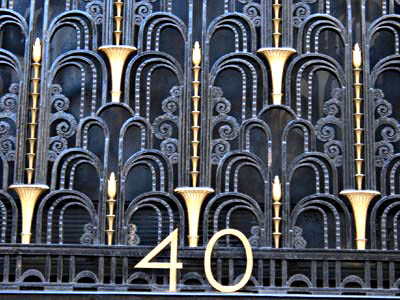 |
 |
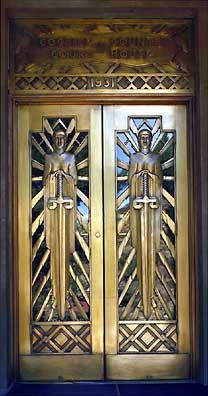 |
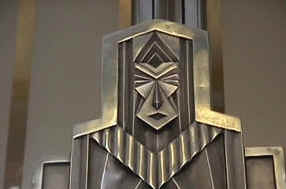 |
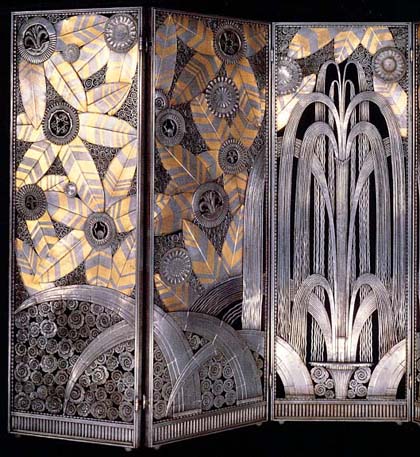 |
| Edgar Brandt, Oasis |

|
|
Chanin Building 122 East 42nd Street 1927-1929 Sloan & Robertson |
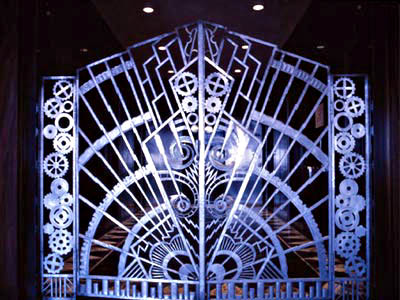 |
| Bronze gates leading to Irwin Chanin's offices, designed with symbolic ornament representing individual aspects of the greatness of New York City. |
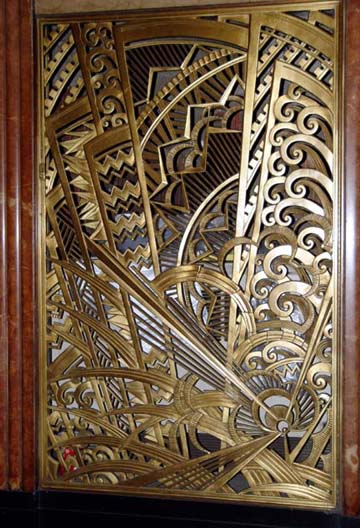 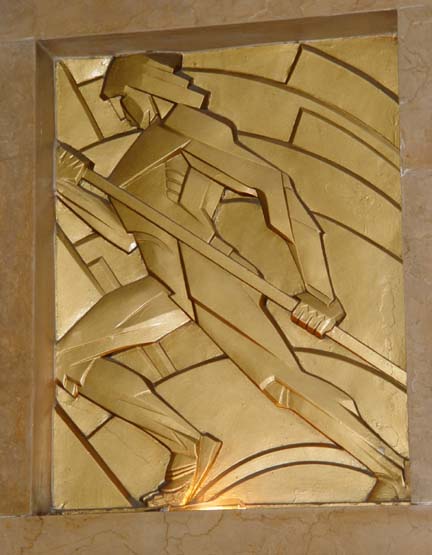 |
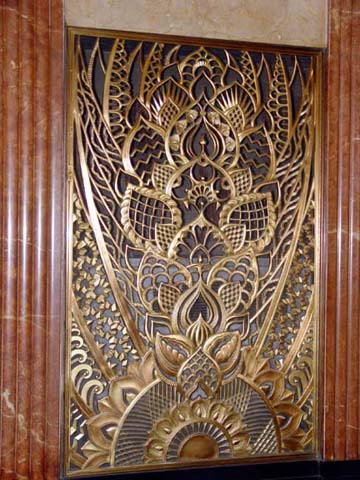 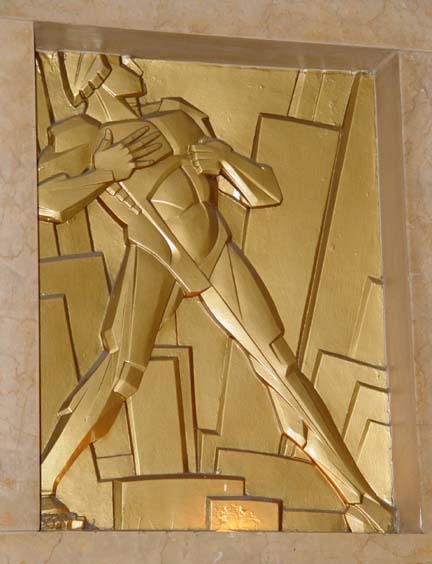 |
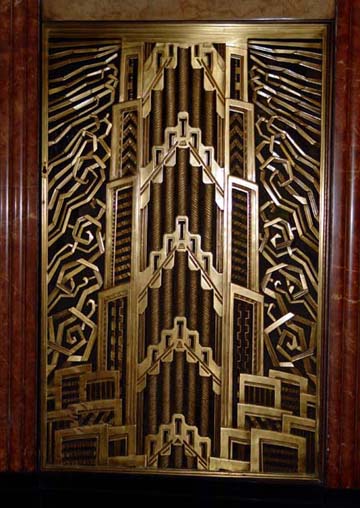 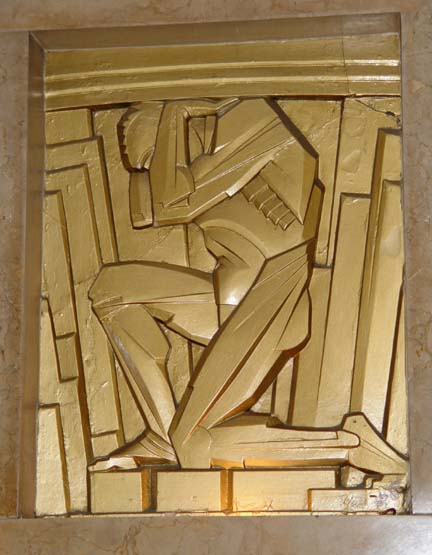 |
 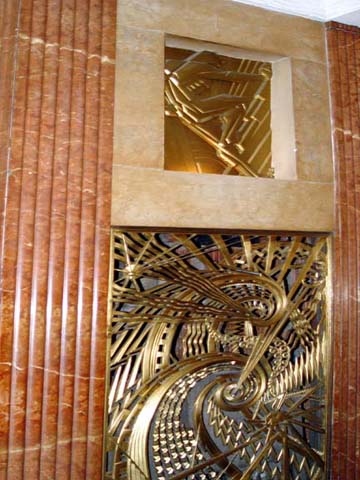 |
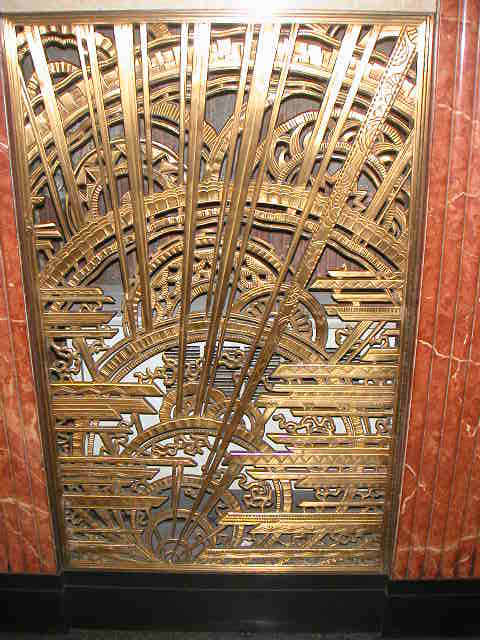 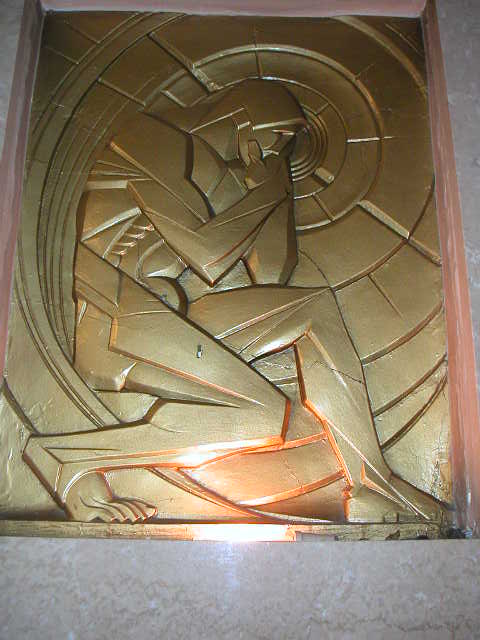 |
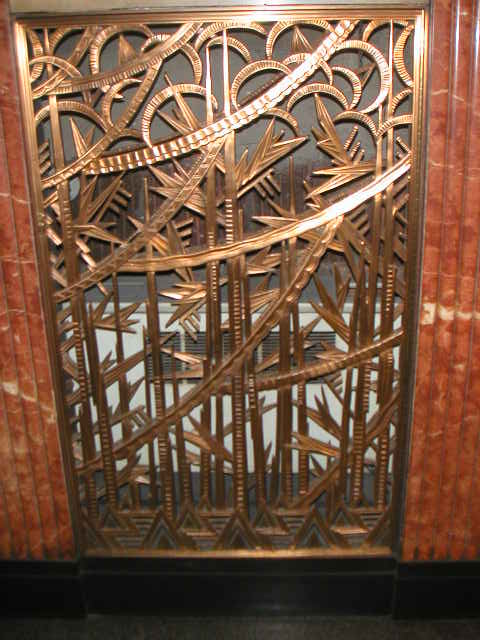 |
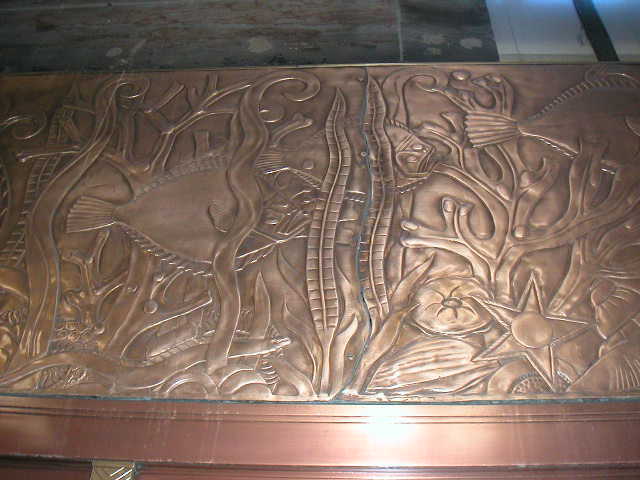 |
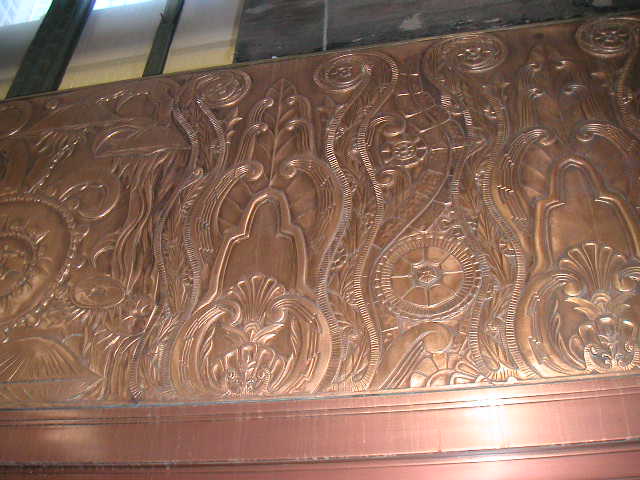 |
| Both lobbies also house a stylized figure that represents some aspect of either the intellectual or the physical life. And below each figure is a bronze grille that represents this same force in an abstracted way. So you see a figure striding forward atop its abstraction below. This is probably the first use of abstract ornament in an American building. Chanin designed it with the assistance of the artist René Chambellan, who specialized in architectural sculpture and was very popular in 1920s New York. The plaster figures have this kind of stylized, almost hyper masculine form and they are somewhat cubist in detail. It was a style that was very popular in the 1920s and the early 1930s. You can see the impact of European modernism on these sculptures. And so in each one of these lobbies, there are four of these groupings—four physical pursuits and four intellectual pursuits. |
|
|
|
Cheney Silk Company 1925, cnr 34th Street and Lexington Ave |
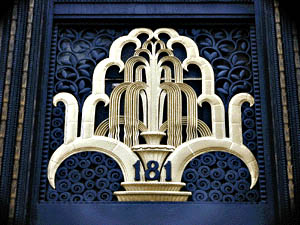 |
| Cheney was a New England silk company that had very strong relations with France, from which they imported a lot of silk. So when Cheney was opening its showrooms on Madison Avenue and Thirty-fourth Street, it had the French metalworking company Ferrobrandt design the showroom's storefront. It was the first example that all New Yorkers could see of this new French decorative style. You can see on this storefront, which miraculously still survives, the frozen-fountain motif over the doors—a motif eventually used on many of the city's buildings. And here at the great bronze doors, you can see organic ornament being used in a very stylized way. Note the curving and also the very pointy forms juxtaposed with one another. These motifs will start to appear all over the city as New York architects begin using the French art-deco motifs. |
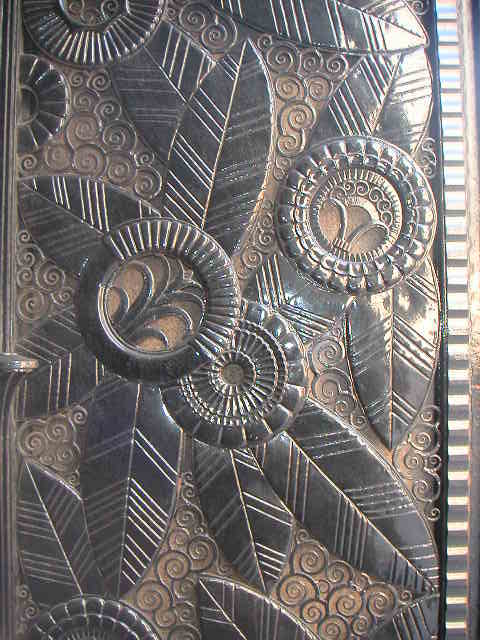 |
|
|
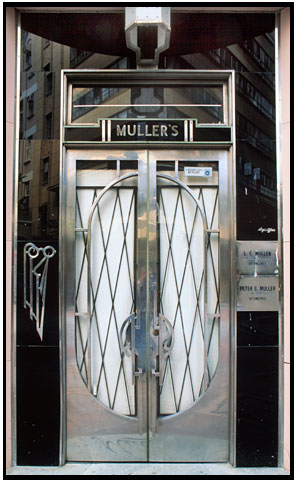 |
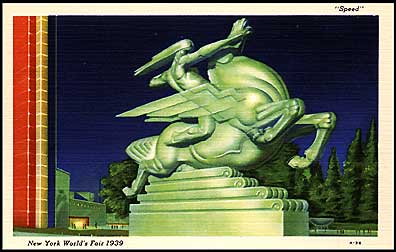
|
|
American International Building 1930-1932 70 Pine St. |
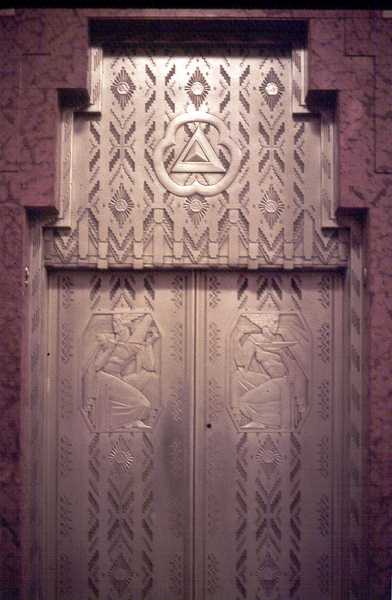 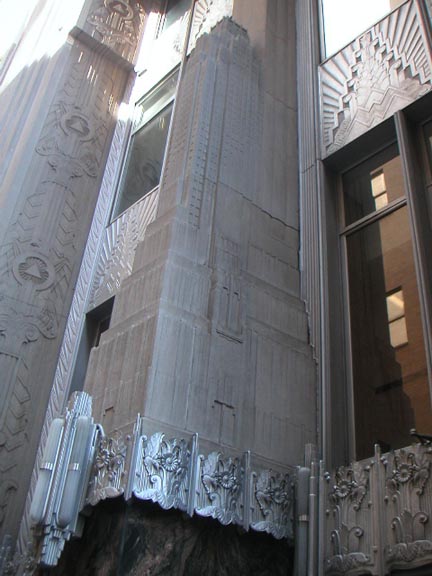 |
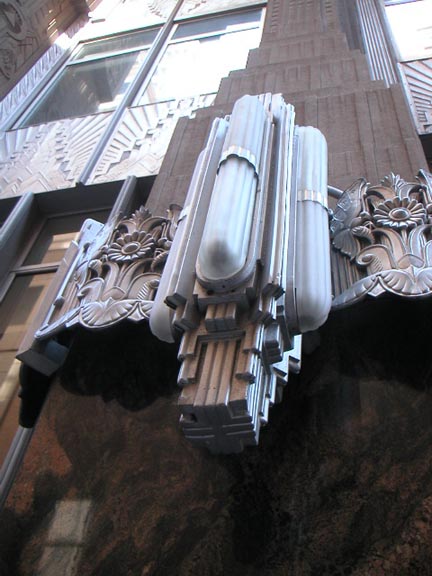 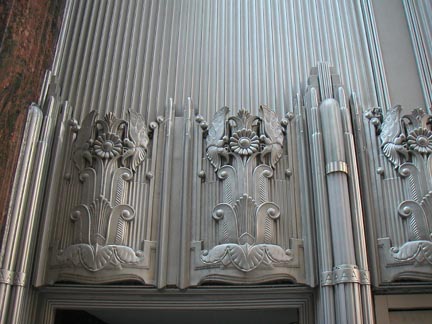 |
|
New Yorker Hotel Sugarman & Berger 1930
|
|
THE FRED F. FRENCH BUILDING
29 Broadway
Western Union
Building
|